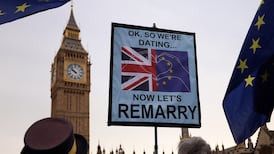The increase in the rate of vaccination is promising to underpin a reopening of society and – we must hope – signal the end of the worst phase of the Covid-19 pandemic. Tánaiste Leo Varadkar even raised the possibility this week that everyone who wanted a vaccine might be offered a first shot by the end of June.
After the huge doubts over the programme up to recently due to disrupted supply and restrictions on the use of some vaccines, this would be welcome. Numbers have already risen significantly and will need to rise further to achieve this.
The impact on levels of illness among vaccinated population groups is already becoming clear. Infection is now at a very low level in those cohorts. Daily case numbers remain in the 400s, but hospitalisations have continued to fall. We must hope that the impact of the serious cyber attack on the HSE will not upset progress significantly in areas such as test-and-trace and that the online portal for vaccinations, which was briefly interrupted yesterday, can remain live.
There is a way to go here and a need for us all to remain cautious and for the Government to resist calls to speed up its reopening plans. Given the rate of vaccination, there is, for example, a significant difference in the proportion of the population who will be covered at the start of June, versus the end of that month. While trends in the meantime must inform any decision, we need to remember that younger age groups can be threatened by Covid-19 too, or can suffer the debilitating impact of long-Covid.
June now looks set to be the biggest month to date for vaccination numbers, depending on the exact advice from NIAC on the use of Johnson&Johnson and AstraZeneca shots. The Tánaiste's comment also pointed to another key issue – what proportion of the population will actually accept the vaccine. He speculated on 10 to 15 per cent deciding not to.
In terms of what is happening internationally, getting the figure much over 80 per cent of the adult population would be an achievement, but one worth fighting for. The higher this figure, the more secure the reopening will be. Indeed the focus is likely to turn at some stage from worries about supply and delivery to getting people not yet vaccinated to sign up.
There remains a way to run in the vaccination programme which even after one vaccine is offered to all will still have to follow it with a second for most, and possibly booster doses thereafter. The issue of whether and how to vaccinate children will also have to be addressed. And in terms of wider Covid-19 policy, it is unlikely that the disease will be eliminated heading into next winter.
Ireland still faces a battle ahead, but the completion of the first phase of the vaccination campaign and the associated reopening will be an important milestone.










